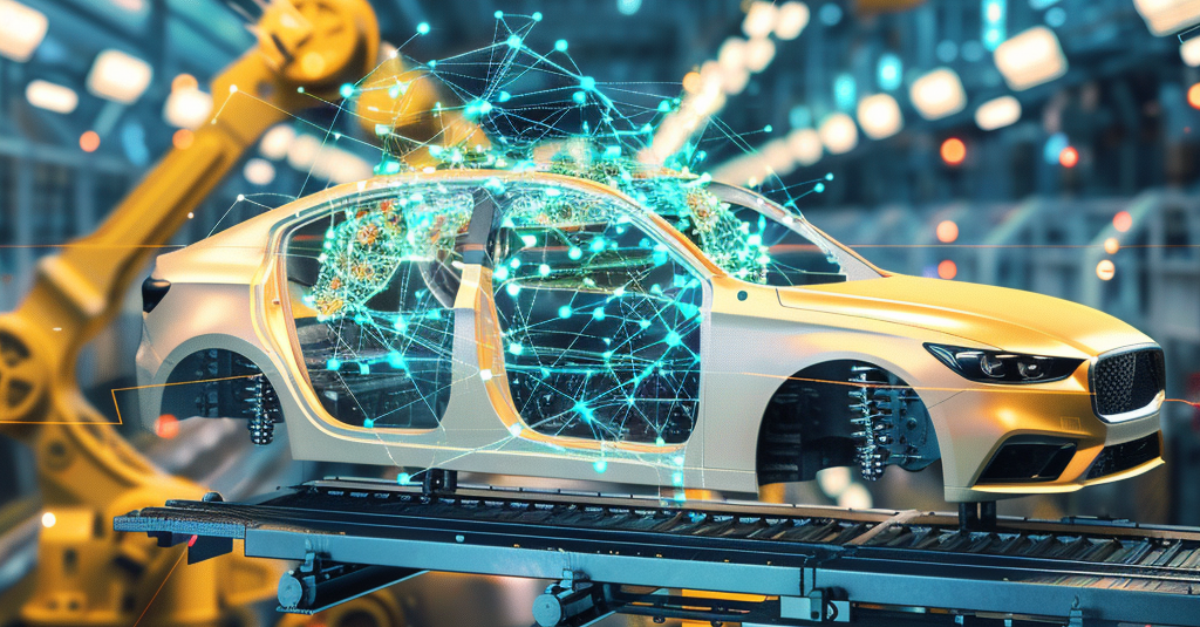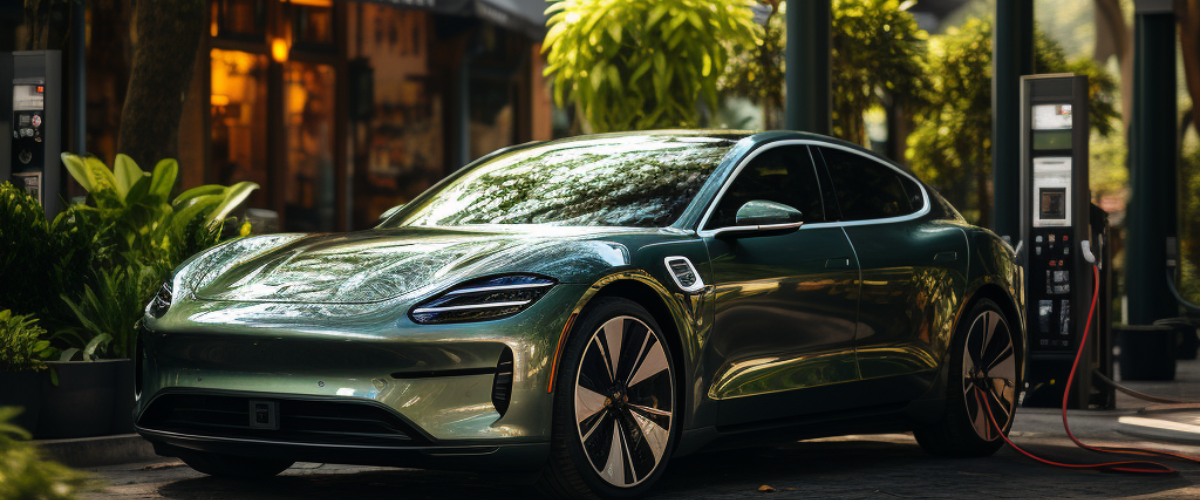Charging Towards a Greener Future: India's Electric Vehicle Revolution
In the vast tapestry of India's automotive landscape, a silent but powerful revolution is underway – The Electric Vehicle (EV) revolution. The Indian electric vehicle (EV) sector is experiencing swift and substantial growth. In 2022, EV sales in India increased by 168%, reaching 3.3 million units. This growth is being driven by a number of factors, including government policies and incentives, improved battery technology, and increasing consumer awareness of the benefits of EVs. But majorly this electrifying surge in interest is due to the paradigm shift towards sustainable transportation, showcasing an adaptation to cutting-edge technology that promises to make a profound impact on our environment and way of life. The rapid increase in electric mobility extends beyond individual vehicles. Various commercial sectors, such as fleet operators and public transportation, are also embracing this transition at an impressive speed.
As the second-most populous country in the world and a rapidly growing economy, India faces its fair share of challenges, including soaring pollution levels and the environmental toll of fossil-fueled mobility. However, fueled by the urgency to combat climate change and reduce dependence on conventional fuels, the nation has embraced EVs as a beacon of hope and is also working on installing many new EV charging stations across the nation.
This graph depicts the number of charging stations established by different manufacturers in the country, aiming to move closer to a more environmentally friendly and sustainable nation.
In this blog we delve deep into the intricacies of India's EV revolution and witness how India is charging ahead to transform its mobility landscape and redefine the nation's future!
The EV Revolution's Indian Acceleration: Current Momentum in Focus
The EV market in India is still in its early stages, but it is expected to grow significantly in the coming years. By 2030, it is estimated that EVs will account for 30% of all new vehicle sales in India. The Indian government has recognized the importance of electric mobility and has taken various initiatives to promote the adoption of EVs in recent years. These initiatives include financial incentives, tax benefits, and subsidies for manufacturers and buyers, as well as the establishment of charging infrastructure across the country.
Despite these efforts, the EV market in India is still in its nascent stage. The high upfront costs of EVs and the limited availability of charging infrastructure have been major barriers to widespread adoption. Additionally, consumer awareness about EVs and range anxiety remains a challenge, leading to a preference for traditional fossil-fuel-powered vehicles.
Obstacles Impeding India's EV Revolution
As discussed in the above paragraph, the growth doesn't mean that the path for EVs doesn't have roadblocks. Let's look at the challenges:
a. Cost and Affordability:
One of the primary challenges in the EV market is the cost of electric vehicles. In a price-sensitive market like India, EVs have to compete with conventional vehicles thZat offer a lower upfront cost. However, advancements in electric vehicle batteries, its technology and economies of scale in production are gradually bringing down the cost of EVs, making them more affordable.
b. Charging Infrastructure:
The availability of a robust charging infrastructure is crucial for the successful adoption of EVs. While the government and private companies are investing in electric vehicle charging stations, there is a need for a widespread and accessible network to alleviate range anxiety among potential EV buyers.
c. Battery Technology:
Battery technology is at the core of electric vehicles. Advancements in the future of battery technology, such as increased energy density, faster charging, and longer battery life, will be instrumental in making EVs more attractive to consumers.
d. Policy and Regulation:
Stable and supportive policies play a crucial role in fostering the growth of the EV industry. The Indian government's long-term vision and commitment to promoting electric mobility are vital for the sector's sustainable development.
e. Local Manufacturing and Employment Opportunities:
EVs provide an opportunity for India to enhance its manufacturing sector and create employment opportunities in the EV ecosystem. A focus on local manufacturing can also reduce the country's dependence on imports for critical EV components.
Electrifying India's Future: The Transformative Potential of EVs
The future impact of electric vehicles (EVs) in India is expected to be significant in all aspects. Here are some of the key areas where EVs are expected to have a major impact:
a. Environmental Impact:
India faces severe air pollution in its major cities, largely attributed to vehicular emissions. EVs produce zero tailpipe emissions, making them a clean and eco-friendly alternative to conventional vehicles. Widespread adoption of EVs can significantly improve air quality and contribute to India's efforts in combating climate change.
b. Energy Security:
India heavily relies on imported crude oil to meet its energy demands. EVs, when charged with renewable energy sources from the electric vehicle charging station, offer an opportunity to reduce the country's dependence on imported oil and enhance energy security.
c. Integration with Renewable Energy:
India has made significant strides in the deployment of renewable energy, such as solar and wind power. EVs can serve as energy storage devices, allowing surplus energy from renewable sources to be stored in EV batteries and later injected back into the grid during peak demand periods.
d. Public Transportation and Last-Mile Connectivity:
India's public transportation system caters to a vast population. Introducing electric buses and rickshaws can greatly reduce emissions and provide a more sustainable mode of travel for millions of commuters. This will make transportation more affordable and convenient for Indians. The cost of running an EV is much lower than the cost of running a petrol or diesel vehicle. EVs also require less maintenance than petrol or diesel vehicles.
e. Shared Mobility and Ride-Hailing Services:
The rise of ride-hailing services presents an opportunity to introduce electric vehicles into commercial fleets. Encouraging ride-sharing and electrifying these fleets can significantly reduce emissions and promote EV adoption.
f. Economy:
The growth of the EV market in India is expected to create new jobs and boost economic growth. The government of India has already announced a number of policies to promote the adoption of EVs, including a tax break on electric vehicles and a subsidy for the purchase of electric vehicles.
g. Technology:
The growth of the EV market in India is expected to spur innovation in the field of electric vehicle technology. This will lead to the development of new and more efficient EV models, which will make EVs even more attractive to consumers.
Zero-Emission Drive: Global Trends Shaping the Future of EVs
While India is making significant efforts to establish a strong foothold in the electric vehicle (EV) production and adoption, there are certain global trends in the automotive market that are proving advantageous for countries worldwide. Let's examine these trends:
- Mass market adoption:
EVs are becoming more affordable and practical, and as a result, they are starting to reach the mass market. This will lead to even more EV sales in the coming years.
- Increased demand for commercial EVs:
The demand for commercial EVs is also growing, as businesses look to reduce their emissions and operating costs. This will drive the growth of the commercial EV market in the coming years.
- Improved charging infrastructure:
The availability of charging infrastructure is still a major barrier to EV adoption. However, governments and businesses are investing in new charging infrastructure, which will make it easier for people to own and drive EVs.
-
New EV technologies:
New EV technologies, such as solid-state batteries and self-driving cars, are still in development. However, as these technologies mature, they will make EVs even more attractive to consumers.
Leading the Electrification: Key Companies Transforming India's EV Sector
India's emergence in the electric vehicle (EV) sector has been nothing short of remarkable, with its production and adoption rates skyrocketing at a rapid and impressive pace. This remarkable progress can be attributed to the pivotal roles played by key players in the Indian EV market. The below-mentioned visionary companies and innovators have spearheaded the charge towards electrification and are driving the high growth of EVs in the nation.
- Tata Motors: Tata Motors stands as India's foremost electric vehicle manufacturer, providing a diverse lineup, such as the Nexon EV, Tigor EV, and Altroz EV.
- Maruti Suzuki: Maruti Suzuki, India's biggest carmaker, has revealed ambitious intentions to introduce several electric vehicle models in the near future.
- Hyundai: Hyundai is a South Korean automaker that has a strong presence in India. The company offers a number of EVs, including the Kona Electric and the Ioniq 5.
- Mahindra & Mahindra: Mahindra & Mahindra is an Indian automaker that is known for its SUVs. The company offers a number of EVs, including the e-Verito and the e-KUV100 NXT.
- Ola Electric: Ola Electric is an Indian electric mobility company that was founded in 2017. The company offers a number of electric scooters, including the S1 and the S1 Pro.
These are just a few of the key players in the EV market in India. The market is still growing, and we can expect to see more new entrants in the coming years.
India's Lithium Discovery: A Game-Changer for the EV Industry
In a major breakthrough for the Indian EV industry, the government has announced the discovery of large lithium reserves in the Reasi district of Jammu and Kashmir. This is a significant development, as lithium is a key component in the production of lithium-ion batteries, which are used in electric vehicles. The total amount of lithium is estimated to be 5.9 million tonnes, which is enough to meet the demand for lithium-ion batteries in India for the next 50 years. This is a win-win for the environment and the economy. This situation offers benefits to both the environment and the economy, making it a win-win scenario. Lets see how:
-
Reduced dependence on imported lithium:
India currently imports most of its lithium from Australia, Chile, and Argentina. The discovery of lithium reserves in India will help to reduce the country's dependence on imported lithium, which will save foreign exchange and strengthen India's energy security. -
More affordable EVs:
The cost of lithium-ion batteries is a major factor that has kept EVs out of reach for many consumers. The discovery of lithium reserves in India could help to reduce the cost of lithium-ion batteries, which would make EVs more affordable for consumers. - Increased investment in the EV industry:
The discovery of lithium reserves in India is likely to attract increased investment in the EV industry. This could lead to the setting up of new lithium-ion battery manufacturing plants in India, which would create jobs and boost the economy.
- A cleaner environment:
EVs produce zero emissions, so they help to reduce air pollution and greenhouse gas emissions. The discovery of lithium reserves in India could help to accelerate the adoption of EVs, which would have a positive impact on the environment.
Electric Dreams Come True: Government Rolls Out New Policies to Drive Electric Vehicle Sales
The government of India has a number of policies and incentives in place to promote EV adoption. These include:
-
The FAME India scheme:
The FAME (Faster Adoption and Manufacturing of Electric Vehicles ) India scheme is a government program that provides subsidies for the purchase of EVs. The scheme has been very successful, and it has helped to drive the growth of the EV market in India. - The FAME India Phase II:
The FAME India Phase II scheme is a continuation of the FAME India scheme. The scheme provides subsidies for the purchase of EVs, as well as for the installation of charging infrastructure.
- The National Electric Mobility Mission Plan (NEMMP):
The NEMMP is a government plan that aims to promote the adoption of EVs in India. The plan includes a number of initiatives, such as the development of charging infrastructure and the introduction of new EV models.
These are just a few of the government policies and incentives that are in place to promote EV adoption in India. The government is committed to promoting the use of EVs, and these policies and incentives are helping to make EVs more affordable and accessible to consumers.
Tesla's Arrival in India: Speculations about the Manufacturing Plant to Revolutionise the EV Market
There have been a lot of speculations about Tesla's plans to set up a manufacturing plant in India, specifically in Gujarat. In May 2023, Tesla CEO Elon Musk said that the company was "very serious" about establishing a production and innovation base in India. He also said that Tesla was looking at manufacturing EV batteries in India.
In June 2023, Tesla met with government officials in Gujarat to discuss the possibility of setting up a manufacturing plant in the state. The Gujarat government has offered Tesla a number of incentives, including a tax break on imported components and land at a discounted rate.
However, there are still some hurdles that Tesla needs to overcome before it can finalise a deal to set up a manufacturing plant in India. One of the biggest challenges is the high import duty on electric vehicles in India. The import duty on electric cars is currently 60%, which makes it very expensive for Tesla to import its cars into India.
Here are some of the speculations about the Tesla manufacturing plant deal in India in Gujarat:
- The plant could be located in the Dholera Special Economic Zone (SEZ) in Gujarat.
- The plant could have a capacity of up to 500,000 cars per year.
- The plant could create up to 10,000 jobs.
- The plant could be operational by 2025.
Conclusion
Electric Vehicles represent a transformative opportunity for India's transportation sector and a vital step towards achieving a more sustainable and cleaner future. While the challenges are significant, the Indian government, along with private sector players, must continue to collaborate and invest in research, development, and infrastructure to accelerate EV adoption. The vision of an electrified future in India relies on a collective effort to overcome obstacles, foster innovation, and embrace a greener way of commuting and transportation. By doing so, India can position itself as a global leader in electric mobility while reaping the benefits of reduced emissions, cleaner air, and enhanced energy security. The road ahead may be challenging, but the destination is undoubtedly worth the journey.
Recent Posts








Add Comment
0 Comments